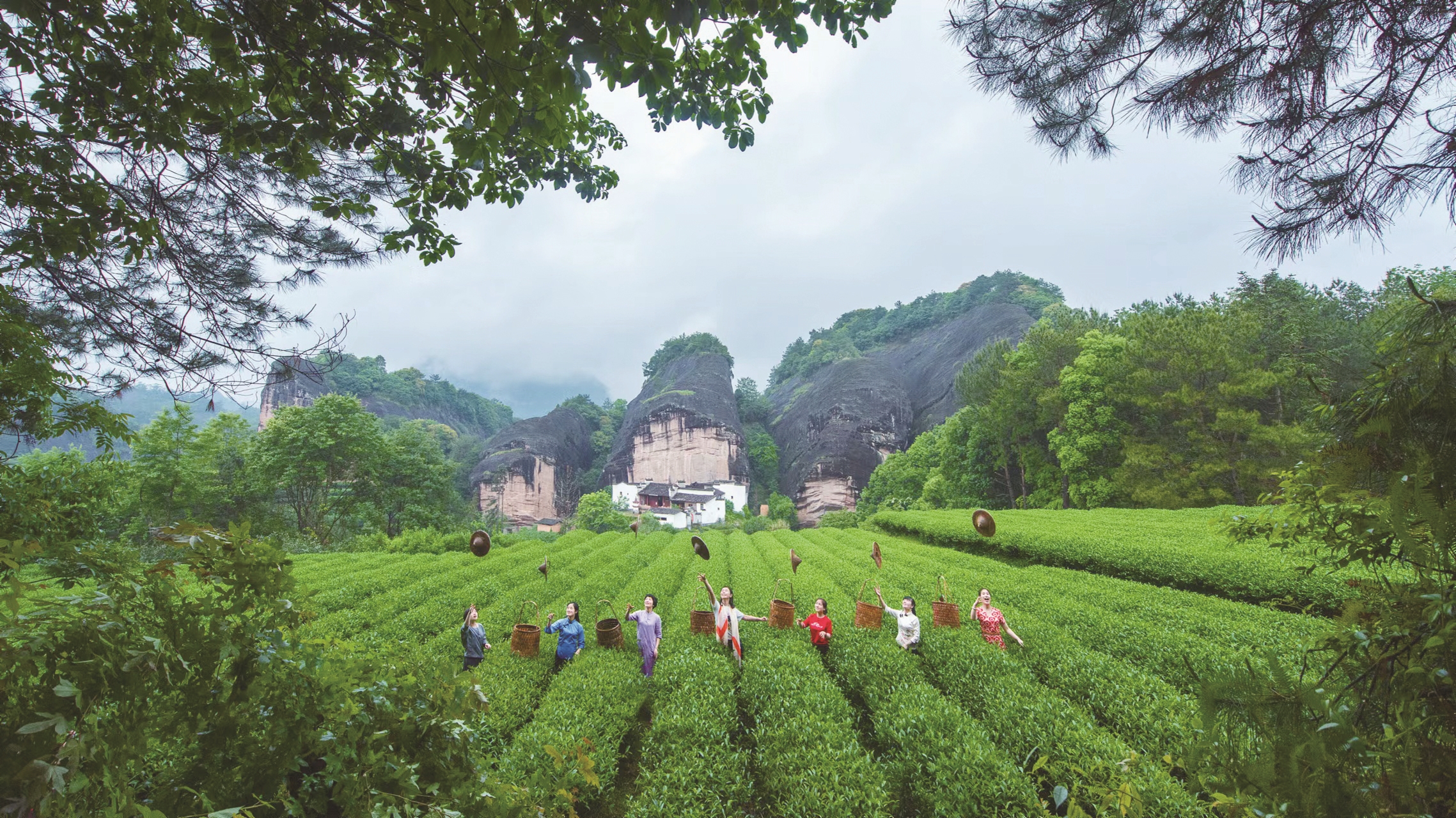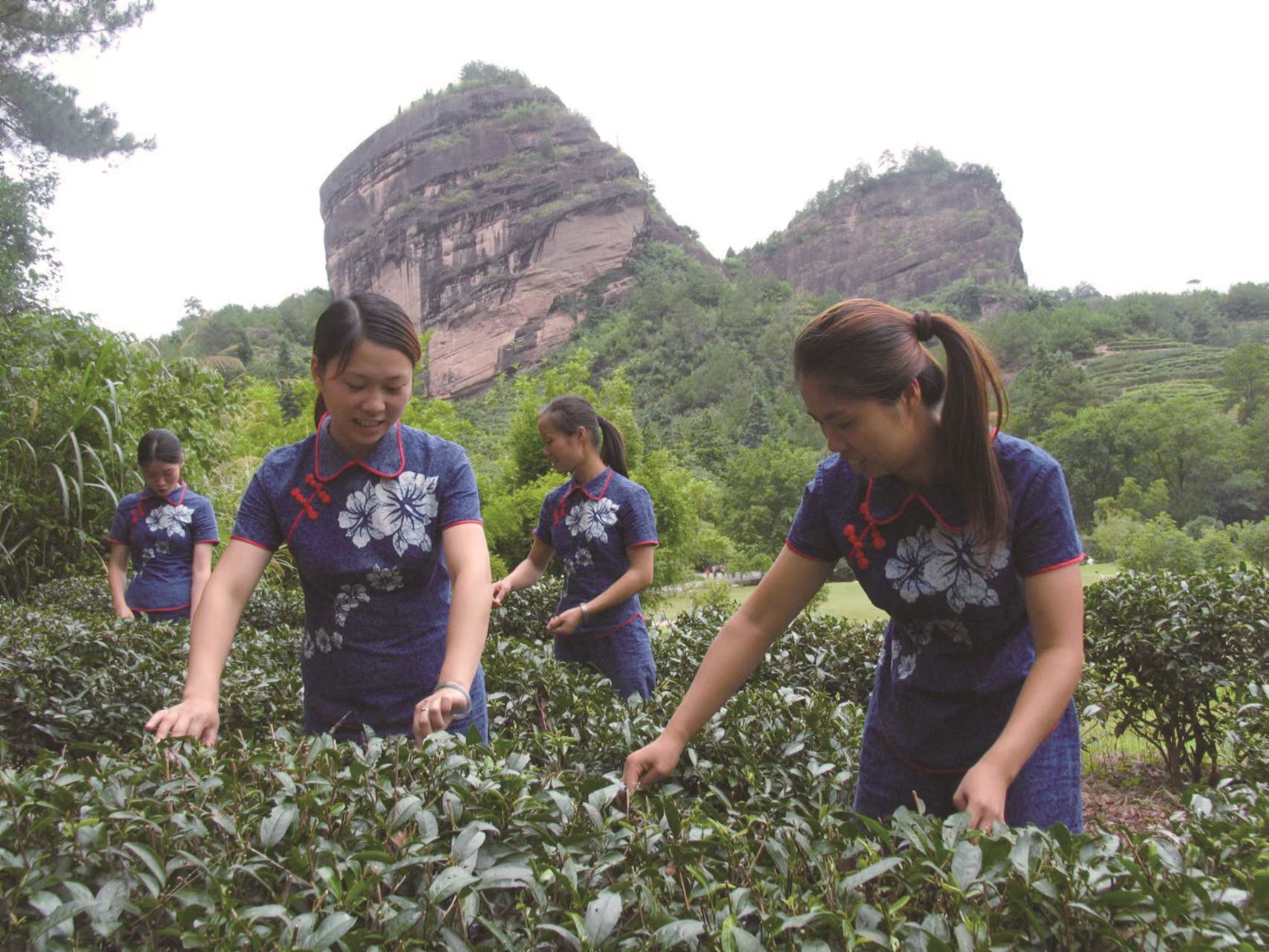Our province’s intangible heritage protection has achieved fruitful results.



Since the 18th National Congress of the Communist Party of China, with the support of the leadership of the provincial party committee and government, the Fujian Provincial Department of Culture and Tourism has intensified the protection and inheritance of intangible cultural heritage in accordance with the deployment requirements of the central authorities, and achieved fruitful results.
-The four-level intangible cultural heritage list system has been basically established.
Our province has continuously improved the list system of representative projects at the national, provincial, municipal and county levels. "Fujian Puppet Show Inheritor Training Plan" was selected into UNESCO’s outstanding practice list, which filled the gap in China’s "excellent practice list". At present, nine projects in the province have been selected into UNESCO’s intangible cultural heritage list (roster), including Nanyin, Mazu Belief, Chinese Paper-cutting (Zhangpu, Zherong), China traditional architectural craftsmanship for timber-framed structures (Minnan Folk House), Sending the King Boat-the ceremony and related practice of sustainable connection between people and the ocean, and China’s traditional tea-making skills and related customs, which are selected into the "Representative List of Intangible Cultural Heritage of mankind"; Two projects, the traditional construction technology of China wooden arch bridge and the manufacturing technology of China watertight compartment, were selected into the "List of Intangible Cultural Heritage in Urgent Need of Protection"; "Fujian Puppet Show Successor Training Plan" was selected as "Excellent Practice List". There are 145 national intangible heritage representative projects in our province, including 143 representative inheritors, 145 protected units and 2 cultural and ecological protection (experimental) areas. There are 705 provincial-level non-legacy representative projects, 775 protected units, 917 inheritors, 1 cultural and ecological protection zone and 15 cultural and ecological protection demonstration sites; There are many intangible cultural heritage projects managed at the city and county levels, and the protection system of the province’s four-level intangible cultural heritage list has been continuously improved.
-The laws and regulations for the protection and inheritance of intangible heritage are more sound.
In recent years, our province has successively promulgated the Regulations on Intangible Cultural Heritage in Fujian Province and the Measures for the Identification and Management of Representative Inheritors of Provincial Intangible Cultural Heritage in Fujian Province. Various districts and cities have issued corresponding management measures in combination with the actual situation of intangible cultural heritage protection. The first special local cultural protection regulation "Measures for the Protection and Development of Minnan Culture in Xiamen Special Economic Zone" issued by Xiamen City came into effect on June 1, 2020.
The Provincial Department of Culture and Tourism has instructed all localities to formulate and promulgate special legislation, and has promulgated individual laws and regulations such as Fuzhou cork painting skill protection regulations, Fuzhou bodiless lacquerware skill protection regulations, Fuzhou Fujian opera protection regulations, and Fuzhou Shoushan stone carving skill protection regulations. The "Measures for the Protection and Management of Zhangzhou Narcissus" is also being revised.
-The construction of the cultural and ecological protection experimental zone was promoted in an orderly manner.
There are 2 national cultural and ecological protection (experimental) zones in our province. After the former Ministry of Culture officially approved the establishment of the Minnan Cultural and Ecological Protection Experimental Zone, our province actively implemented the Master Plan of Minnan Cultural and Ecological Protection Zone and promoted the overall work of non-legacy regions.
In November 2019, Minnan Cultural and Ecological Protection Experimental Zone passed the acceptance test and was selected as the first batch of national cultural and ecological protection zones. In January 2017, the former Ministry of Culture officially approved the establishment of the Hakka Culture (West Fujian) Ecological Protection Experimental Zone. In October 2019, the Master Plan of Hakka Culture (West Fujian) Ecological Protection Zone was promulgated and implemented with the consent of the provincial government. In 2015, the provincial government approved the establishment of a provincial Mazu cultural and ecological protection zone and 15 provincial She cultural demonstration sites.
-The exhibition activities of intangible cultural heritage exhibitions have been continuously expanded.
Our province has thoroughly implemented the People’s Republic of China (PRC) Intangible Cultural Heritage Law and the Fujian Intangible Cultural Heritage Regulations, strengthened the influence of intangible cultural heritage throughout the province, promoted the integration of intangible cultural heritage into people’s daily lives, and fully demonstrated the fruitful achievements of our province’s intangible cultural heritage protection and inheritance practice.
First, carefully organize the annual "Cultural and Natural Heritage Day" non-legacy publicity and exhibition series. We will launch three-level synchronous linkage among provinces, cities and counties, highlight the display of non-legacy projects selected in the UNESCO roster, and strengthen exchanges and interactions in combination with mainstream propaganda.
Second, in combination with major folk festivals such as the Spring Festival and the Dragon Boat Festival, we will organize activities to benefit the people, such as the New Year’s Eve, the live broadcast of the hometown year, and the custom experience of the Dragon Boat Festival, so that the legacy can enter the lives of the people.
Third, actively participate in various activities organized by the Ministry of Culture and Tourism, and recommend outstanding intangible cultural projects to participate in activities such as the National Intangible Cultural Heritage Week Exhibition, the China Intangible Cultural Heritage Expo, and the Intangible Traditional Skills Exhibition. Non-legacy projects have appeared on the national stage and won praises from all parties.
—— The publicity, dissemination and interpretation of intangible cultural heritage have been continuously strengthened.
Our province constantly innovates non-genetic broadcasting methods and strengthens the propaganda, dissemination and interpretation of intangible cultural heritage. Hold exhibitions and performance activities of UNESCO’s intangible projects. Organize high-end conference activities such as the UN Intangible Heritage List projects, national intangible heritage representative projects and inheritors to participate in the Intangible Cultural Heritage Expo, Fujian Promotion of the Ministry of Foreign Affairs, Hong Kong Public Open Day of the Liaison Office, the 6th World Fujian Business Conference, the 12th Cross-Strait Cultural Industry Expo and China International Import Expo. The outstanding achievements of our province’s intangible heritage protection and inheritance practice were displayed on the international exchange stage, which enhanced national pride and cultural identity.
On the premise of doing a good job in epidemic prevention and control, the Provincial Department of Culture and Tourism carefully planned a variety of non-legacy activities. In 2022, "Cultural and Natural Heritage Day", Fujian’s non-legacy publicity and exhibition series focused on the theme of "connecting modern life and blooming glamour", highlighting "enjoying traditional culture and purchasing non-legacy goods to promote cultural tourism economy". More than 360 non-legacy publicity and exhibition activities were held in the province, involving 226 non-legacy projects and 460 non-genetic inheritors, with a cumulative online and offline participation of more than 10 million people.
—— Continuously improve the level of integration and development of non-legacy travel.
In 2021, the Provincial Department of Culture and Tourism organized the selection of "Fujian Cultural Logo" and selected "Fujian Tea" as one of the "Fujian Cultural Logos" and promoted it through all channels; Relying on the tea culture resources such as Jin ‘an Chunlun Ecological Tea Garden, Fuding Taimushan Green Snow Bud Tea Garden, Fointint Yangcun and Wuyishan Dahongpao Scenic Area, the "World Tea Country Tour" is launched in series.
In 2022, the Provincial Department of Culture and Tourism launched 10 non-legacy theme tourist routes in combination with the protection and inheritance of non-legacy resources in various districts and cities in our province; In conjunction with the Provincial Department of Human Resources and Social Security and the Provincial Rural Revitalization Bureau, the Notice on Promoting the Construction and Identification of Intangible Heritage Workshops was issued, guiding and encouraging intangible heritage representatives to create various business themes and production and processing points, further promoting employment, consolidating the achievements of poverty alleviation and helping rural revitalization.
On the evening of November 29th, Beijing time, China’s declared "China’s traditional tea-making skills and related customs" passed the review at the 17th regular session of the UNESCO Intergovernmental Committee for the Protection of Intangible Cultural Heritage in Rabat, Morocco, and was included in the UNESCO representative list of human intangible cultural heritage. So far, 43 projects in China have been listed in UNESCO’s intangible cultural heritage list, ranking first in the world.
The "China Traditional Tea Making Techniques and Related Customs" project includes six national-level intangible representative projects, including Wuyi Rock Tea (Dahongpao) making techniques, Tieguanyin making techniques, Fuding White Tea making techniques, Fuzhou Jasmine Tea scenting techniques, Tanyang Gongfu tea making techniques and Zhangping Shuixian tea making techniques.